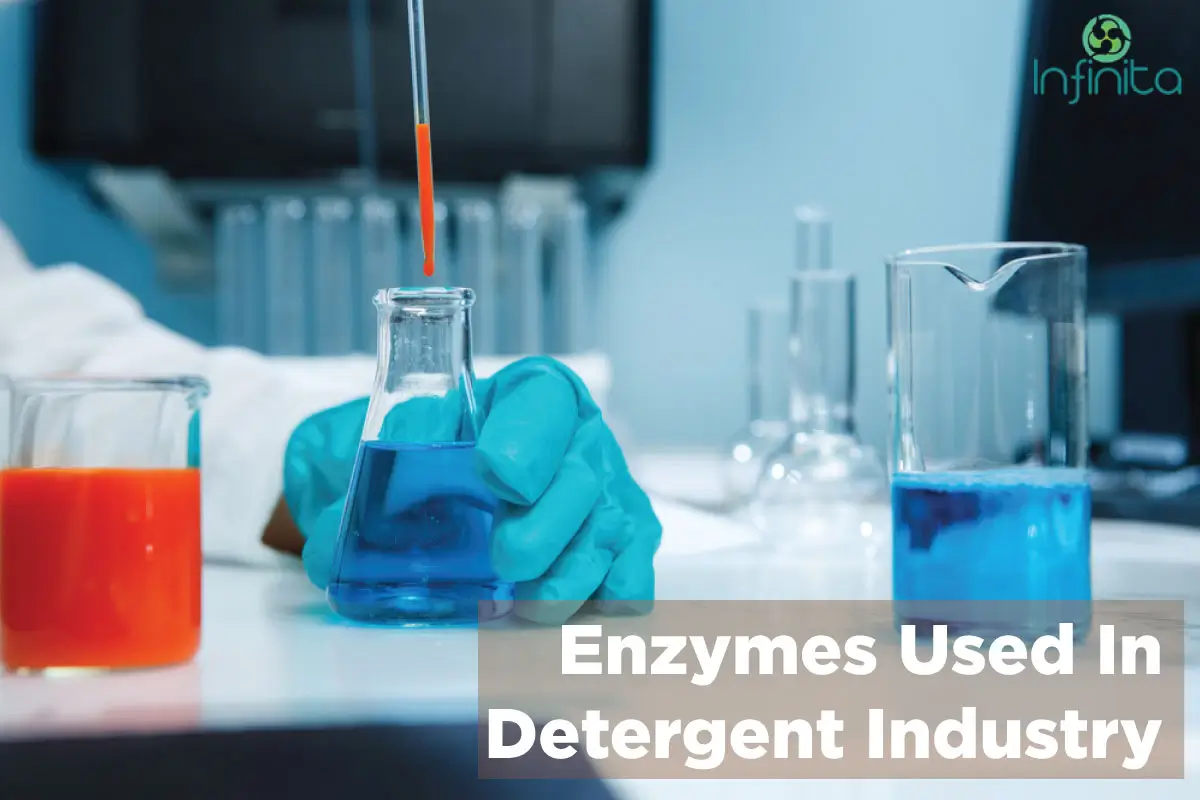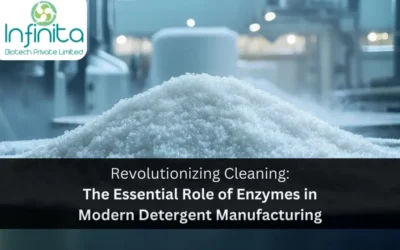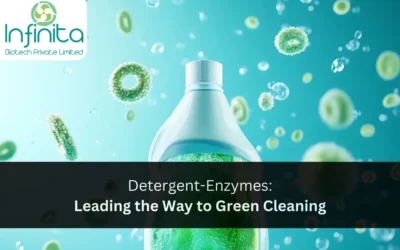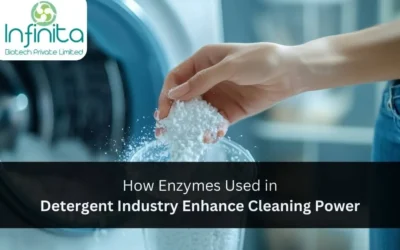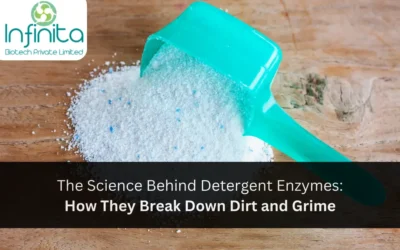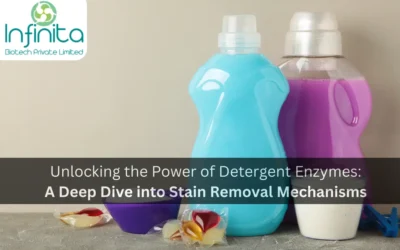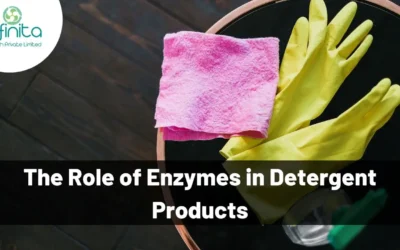The Use Of Enzymes In The Detergent Industry
The use of enzymes in detergent formulations is currently common in developed countries, with over half of all detergents presently out there containing enzymes. Despite the fact that the detergent business is the largest single marketplace for enzymes details of the enzymes used in the detergent industry and therefore the ways in which they are used have seldom been revealed.
The catalyst primarily based detergents have higher improvement properties as compared to artificial detergents. They are active at low laundry temperatures and atmosphere friendly conjointly (Kumar, et al. 1998). The enzymes within the detergents don’t lose their activity when removing the stain. The enzyme-containing detergents also improve the fabric quality and keeping colour bright. The catalyst primarily based detergents square measure employed in the little amount as compared artificial chemicals. They can work on terribly coldness, atmosphere friendly and fully perishable.
Dirt comes in several forms and includes proteins, starches, and lipids. In addition, garments that are starched should be freed of the starch. Using detergents in the water at high temperatures and with vigorous commixture, it is possible to remove most types of dirt but the cost of heating the water is high and extended commixture or beating can shorten the lifetime of covering and different materials. The enzymes used in detergent industry permits lower temperatures to be used and shorter periods of agitation square measure required, typically when a preliminary amount of soaking. In general, enzyme detergents remove protein from clothes soiled with blood, milk, sweat, grass, etc. far more effectively than non-enzyme detergents. However, mistreatment fashionable bleaching and brightening agents, the distinction between wanting clean and being clean could also be tough to tell apart. At present solely proteases and amylases square measure unremarkably used. Although a large vary of lipases is understood, it is only very recently that lipases suitable for use in detergent preparations have been described.
Detergent enzymes should be cost-efficient and safe to use. Early tries to use proteases foundered owing to producers and users developing hypersensitivity. This was combatted by developing dust-free granulates (about 0.5 mm in diameter) in which the enzyme is incorporated into an inner core, containing inorganic salts (e.g. NaCI) and sugars as a preservative, bound with reinforcing, fibres of carboxymethyl cellulose or similar protective colloid. This core is coated with inert waxy materials made up of paraffin or polythene glycol and varied deliquescent binders, which later disperse in the wash. This combination of materials each prevents dirt formation and protects the enzymes against injury by different detergent parts throughout storage.
Enzymes are utilised in amazingly tiny amounts in most detergent preparations, only 0.4 – 0.8% crude catalyst by weight (about I Chronicles by cost). It follows that the flexibility to face up to the conditions of use could be an additional vital criterion than extreme cheapness. Once discharged from its coarse kind the catalyst should stand up to anionic and non-ionic detergents, soaps, oxidants like atomic number 11 perborate that generate peroxide, optical brighteners, and numerous less-reactive materials all at hydrogen ion concentration values between 8.0 and 10.5. though one impact of incorporating enzymes is that lower laundry temperatures are also used with subsequent savings in energy consumption, the enzymes should retain activity up to 60 degrees C.
The latest trend is to scale back this phosphate content for environmental reasons. It may be replaced by sodium carbonate plus extra protease.
In addition to the coarse forms supposed to be used in detergent powders, liquid preparations in resolution in water and slurries of the protein in a very non-ionic wetter square measure obtainable for formulating in liquid ‘spotting’ concentrates, used for removing stubborn stains. Preparations containing Termamyl is produced, Termamyl being sufficiently resistant to proteolysis to retain activity for long enough to fulfill its function.
It should be noted that all the proteolytic enzymes described are fairly non-specific serine endoproteases, giving preferred cleavage on the carboxyl side of hydrophobic amino acid residues but capable of hydrolysing most peptide links. They convert their substrates into tiny, readily soluble fragments which can be removed easily from fabrics. Only serine protease; may be used in detergent formulations: thiol proteases (e.g., papain) would be oxidised by the bleaching agents, and metalloproteases (e.g. thermolysin) would lose their metal cofactors thanks to complexing with the water softening agents or chemical group ions.
The enzymes square measure provided in forms (as delineated above) appropriate for formulation by detergent makers. Domestic users square measure aware of small-grained preparations however liquid preparations for home use square measure more and more obtainable. Household wash presents issues quite completely different from those of commercial laundering: the home wash consists of a good style of materials dirty-faced with a spread of materials and therefore the user needs convenience and effectiveness with less thought of the price. Home detergents can most likely embrace each associate degree enzyme and a peptidase and an extended warm-water soaking time are suggested.
Industrial washing needs effectiveness at minimum value thus heated water is going to be re-used if doable. Large laundries will separate their ‘wash’ into classes and therefore minimise the usage of water and maximise the effectiveness of the detergents. Thus white cotton uniforms from AN edifice will be segregated for laundry, solely peptidase being needed. A pre-wash soaking for 10-20 min at pH up to 11 and 30-40 degrees C is followed by the main wash for 10-20 min at pH 11 and 60-65 degrees C. The water from these stages is discarded to the sewer. A third wash includes salt as bleach which might inactivate the enzymes apace. The water from this stage is used again for the pre-wash but, by then, the hypochlorite concentration is insufficient to harm the enzyme. This is essentially a batch process: hospital laundries may employ continuous washing machines, which transfer less-initially-dirty linen from a pre-rinse initial stage, at 32 degrees C and pH 8.5, into the first wash at 60 degrees C and pH 11, then to a second wash, containing hydrogen peroxide, at 71 degrees C and pH 11, then to a bleaching stage and rinsing. Apart from the pre-soak stage, from which water is run to waste, the process operates counter-currently. Enzymes square measure employed in the pre-wash and within the initial wash, the amount of peroxide at this stage being too little to inactivate the enzymes.
Conclusion
There square measure opportunities to increase the utilisation of enzymes in detergents each geographically and numerically. They have not found widespread use in developing countries which are often hot and dusty, making frequent washing of clothes necessary. The recent handiness of an appropriate enzyme might increase the quantities of enzymes utilised considerably. Added peroxidases might aid the bleaching effectivity of this peroxide.
A recent development in detergent enzymes has been the introduction of AN alkaline-stable plant life cellulase preparation to be used in laundry cotton materials. During use, tiny fibres square measure raised from the surface of cotton thread, resulting in a change in the ‘feel’ of the fabric and, particularly, in the lowering of the brightness of colours. Treatment with cellulase removes the tiny fibres while not apparently damaging the most important fibres and restores the material to its ‘as new’ condition. The cellulase also aids the removal of soil particles from the wash by hydrolysing associated cellulose fibres.
